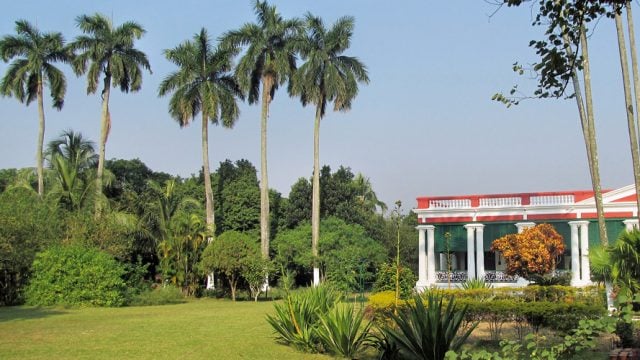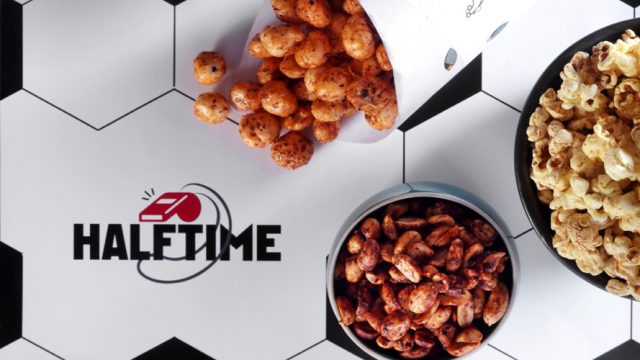For anyone who has lived in Kolkata for long, Durga Puja is more than just a religious
“Most festivals in India share and support a single concept. They might be multi-lingual or multi-cultural but they all have one unique common quality i.e. binding communities. It’s an opportunity for communal bonding, and Durga Puja is one such festival,” says well-known radio jockey Mir Afsar Ali, who is also a television anchor and actor.
There are several small aspects that give Durga Puja its present identity – from the actual Pujo, the adda sessions to the food of course! You cannot miss Kolkata’s food, especially during Pujas, if you consider yourself a serious foodie.
The day of an average Bengali during this period begins with several bhars of tea, at least two different newspapers, a few radhaballabhis (yes, those deep fried stuffed beauties) with cholar dal (Bengal style gram lentil, sweetened like the average Kolkata population). It’s hard work for the local or para sweet shops but during Pujo, they tend to get the combination ready as early as 7am (sometimes even earlier) so people can fill themselves up after a long night of pandal-hopping.

If you find yourself in Kolkata, some noteworthy places to try the famous Bengali breakfast are Sri Hari Mistanna Bhandar in Bhowanipore, Mrityunjoy Ghosh and Sons on Sarat Bose Road near Lansdowne Road and the famous Nandalal Sweets in Sukiya Street.
Luchi is another typical breakfast item in Kolkata. Most holiday breakfasts include a plate of luchi with aloo dum. But, somehow, other than Bengali fine-dining restaurants like Bhojohori Manna or 6 Ballygunge Place, luchi isn’t usually found in any general shops whereas radhaballabhis can be found aplenty. The Durga Puja bhog too always includes luchi, but more on that later.
Breakfast done and dusted, it’s time for adda. What is adda? In other words, it is when you sit with a bunch of friends and have hearty discussions about almost everything under the sun – from politics, food, music to Mohun Bagan. And before you know it, it’s time for the lunch. The quintessential fish thali (sometimes with meat) is always a good option.
Most good restaurants in Kolkata prepare their own version of the set lunch (rice, dal, fish, vegetables and aloo bhaja) along with an a la carte menu. But let’s not forget the typical Bengali ‘pice’ hotels (with the freshest catch of fish and rice served on a banana leaf). They give restaurants stiff competition by serving equally scrumptous fares at a fraction of the prices. Few noteworthy ‘pice’ hotels in the city are Adarsha Hindu Hotel in Gariahat, Swadhin Bharat Hindu Hotel in College Street and Siddheswari Ashram near New Market.
The insiders or who’ve given chanda (i.e. donation) are entitled to get the Prasad of the goddess aka bhog. It’s usually khichuri with labra (mixed vegetables of sorts) and porebhaja (fried vegetables). However, you’ll still be served bhog if you’re not on the list. It’s Durga Puja after all and the bhogs are a massive affair.
The evening starts with the arati (in front of the goddess) and the gathering soon shifts to somebody’s residence. Snacks are devoured while another session of adda begins. Mostly chanachur and chips rule but a couple of Bhetki fish fingers never hurt anyone. And that’s how the locals get ready for a night of revelry, food and pandal-hopping.

The dinner formula on most days is simple – RBC. What you ask? RBC translates into Roll, Biryani and ‘Chowmein’ mostly from roadside vendors. The kathi roll is such an important way of life for the locals. A rolled up paratha with egg and little chunks of meat smothered with sauce, onions and lime juice. Rolls shops are aplenty but one can check out Nizams and Baadshah at Esplanade, Kusums on Park Street and Bedwin at Gariahat.

Biryani here means the Kolkata style – ittar flavoured with a huge chunk of potato without which the dish is a strict no-no. Though one can give the biryani a miss during Durga Puja because shops tend to make it in massive quantities and it never turns out the way it usually tastes on regular days. However, in case you want to taste it, head to Shiraz at Mullickbazar, Zeeshan at Park Circus, Mezban at Ripon Street or Royal at Chitpur.
The ‘chowmein’ a.k.a hakka noodles are mostly prepared at the roadside stalls along with rolls. Some even use a strange mix of spices which can include five-spice powder and leftover chicken gravy! While heading to proper Chinese restaurants, the locals love devouring the roadside variety during the Pujo from the many lanes and bylanes of the city.

In between this chaos, please do not forget the lifeline of us Kolkatans – sweets. We love sweets. We eat them when we are sad, we eat them when we’re happy, we eat them on any occasion basically! Varieties of sandesh is usually the main choice but never forget the ones dipped in syrup or coated with sugar. Head to Bhim Nag’s in Bow Bazar for ledikini, Girish Chandra Dey and Nakul Chandra Nandy near Girish Park for sandesh and of course KC Das for the rosogolla!
So, on this happy note, come to Kolkata during this Durga Puja and we promise you a gastronomic experience you’re not going to forget anytime soon!
Indrajit is a Kolkata-based food blogger whose lip-smacking articles can be found on moha-mushkil.com
See wbtourismpuja.in & wbtourism.gov.in for more details and download the Sharadotsav App by the Dept of Tourism available on Google Play Store.
Durga Puja
food
Bengali cuisine





